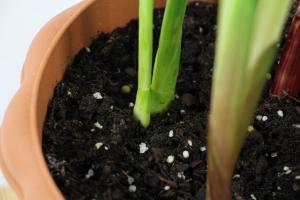How Far to Plant Fruit Trees
Planting fruit trees is a great way to add beauty to your landscape and enjoy fresh, delicious fruit. But before you start digging holes and putting in your new trees, you need to consider how far apart to plant them. The spacing of your fruit trees is important for their growth, health, and fruit production. In this article, we'll discuss the factors you need to consider when determining how far to plant fruit trees.
Factors to Consider
When deciding on the right spacing for your fruit trees, there are several factors you need to take into account. These include:
The type of fruit tree: Different types of fruit trees have different space requirements. For example, apple trees need more space than peach trees.
The root system: Trees with deeper root systems need more space between them to avoid competition for water and nutrients. Shallow-rooted trees can be planted closer together.
The soil type: Soil that is rich in nutrients allows you to plant trees closer together than soil that is poor in nutrients.
The climate: Trees planted in areas with hot, dry climates need more space to avoid dehydration, while trees planted in cooler, wetter climates can be planted closer together.
The variety: Within each type of fruit tree, there are different varieties that may have different space requirements. Check with your local nursery or extension office for recommendations on specific varieties.
Recommended Spacing for Fruit Trees
While the spacing of your fruit trees will depend on the factors listed above, there are some general guidelines you can follow. Here are the recommended spacing distances for some of the most common fruit trees:
Apple trees: 20 - 30 feet apart
Peach trees: 12 - 20 feet apart
Pear trees: 20 - 25 feet apart
Cherry trees: 20 - 30 feet apart
Plum trees: 10 - 20 feet apart
Citrus trees: 8 - 12 feet apart
Keep in mind that these are just general recommendations and that you may need to adjust the spacing based on the factors listed above.
Other Considerations
In addition to spacing, there are some other things you should consider when planting fruit trees. Here are a few:
Location: Make sure you plant your fruit trees in a location that gets plenty of sunlight and is well-drained. Avoid planting them in low-lying areas that are prone to flooding.
Soil preparation: Before planting your fruit trees, prepare the soil by adding organic matter and fertilizer. This will help ensure they have the nutrients they need to grow and produce fruit.
Pruning: Regular pruning is essential for the health and productivity of your fruit trees. Make sure you know how to properly prune your specific type of tree.
Pest and disease control: Fruit trees can be susceptible to a variety of pests and diseases. Learn about the types of pests and diseases that are common in your area and take steps to prevent and treat them.
Conclusion
Planting fruit trees is a wonderful way to enhance your landscape and enjoy fresh, healthy fruit. By considering the factors listed above and following the recommended spacing guidelines, you can ensure the health and productivity of your trees for years to come.

 how many times do yo...
how many times do yo... how many planted tre...
how many planted tre... how many pine trees ...
how many pine trees ... how many pecan trees...
how many pecan trees... how many plants comp...
how many plants comp... how many plants can ...
how many plants can ... how many plants and ...
how many plants and ... how many pepper plan...
how many pepper plan...































